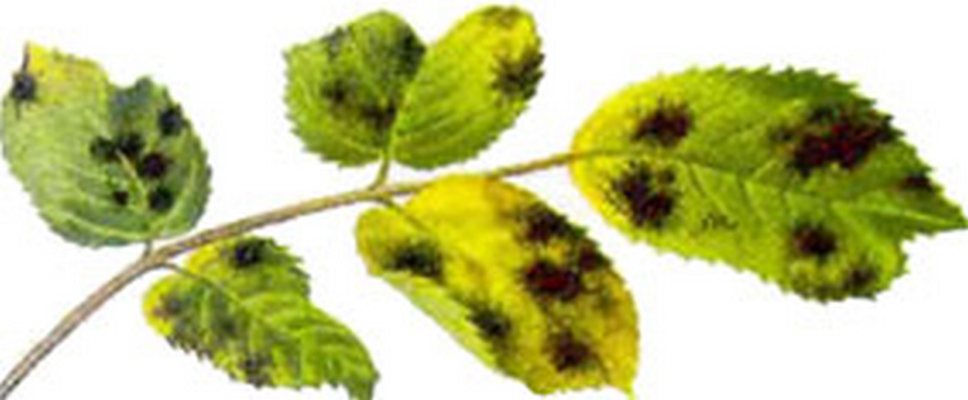Black spot of roses (Marssonina rosae) is a disease that is ubiquitous. The most susceptible to this disease are areas where it rains a lot during the season. The fungus infects plants at the beginning of the growing season, and the signs appear in July-August. Manifested in the leaves in the form of round or star-shaped dark brown or black spots. With the intensive development of black spots, the spots merge, covering the entire surface of the sheet. The disease will progress at a temperature of 19-23 C and high humidity. Deficiency in black spot contributes to a lack of potassium. The affected leaves fall off, the plants weaken, poor flowering and untimely resumption of growth are observed. As a result, unripe shoots freeze slightly.
The most susceptible to black spot: tea, hybrid tea, climbing, wild species roses (dogrose). But in different geographic areas, roses react differently to the disease.
Winter fungus on fallen leaves. There are no varieties of roses completely resistant to black spot. To fight this disease is difficult. It is recommended to collect and burn diseased leaves. At the beginning of the blooming of the leaves twice, with an interval of 7 days, it is necessary to spray the fungicide solution. The same can be done in the summer when the first signs of the disease appear. Preparations should be used each time different. You can also use decoctions of nettle and horsetail. Copper and sulfur-containing preparations also have a therapeutic effect. Repeat spraying as necessary.
As a preventive measure against black spot roses, a well-balanced plant nutrition should become available during the summer. In no case can not sort out with nitrogen fertilizers.

Other types of rose spot
In addition to black spot, other rose spots are common.
- Cercosporosis – the causative agent of Cercospora Rosicola – a disease in which you will see on the leaves roundish spots 1-5 mm in diameter, brown with a dark or purple rim and a tender bloom of olive color
- Septoria is a disease characterized by confluent whitish or dark brown spots with a dark red rim and dotted pycnidia in the center.
- In sphaceloma, the appearance of the leaves is as follows: the spots are small, roundish, black, or purple with a light purple border. These spots lighten with time, and the spores have the appearance of black pads.
- Perinosporosis is known more as downy mildew. This disease is characterized by the appearance on the leaves of large diffuse spots of a reddish brown color without a rim. The spots dry out quickly, and a grayish, almost imperceptible bloom develops on the underside of the leaf.
You can fight these diseases as well as with black spot.
Have a good fight!